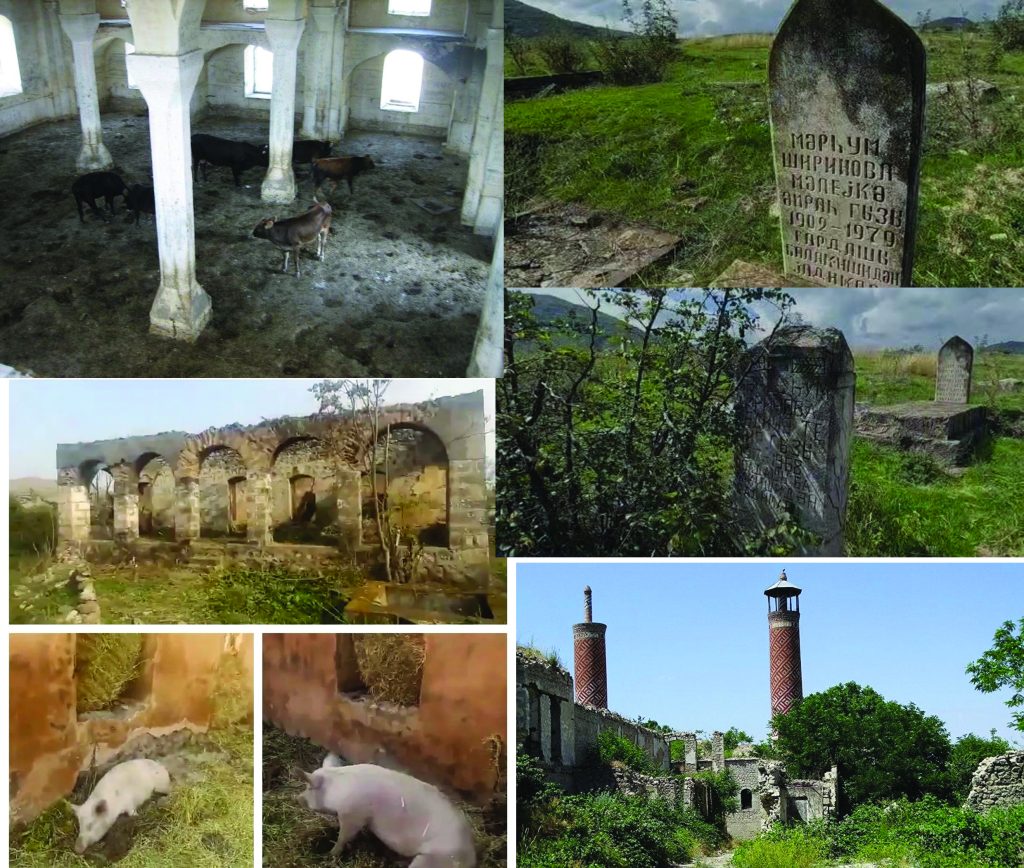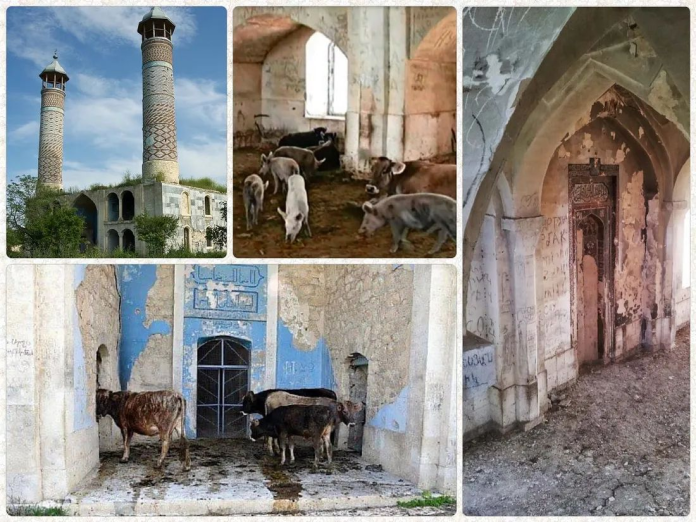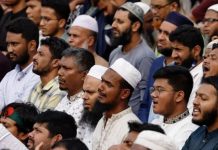Azerbaijani culture dates back to centuries ago. Numerous pearls of Azerbaijani culture and architecture have been inscribed in the UNESCO World Heritage List and UNESCO Representative List of the Intangible Cultural Heritage of Humanity.
The culture, science , and literature went through the period of great progress in late Middle Ages in Azerbaijan, as well as Karabakh like in the east of all Moslem countries. The Karabakh region, unlike most regions of Azerbaijan, as well as countries in the world, is a territory with a more ancient history. It is Karabakh that is rich in historical and material cultural monuments, rich literature, art, and musical culture. Its beautiful nature, climate, and abundance of natural resources have had a great influence on the thinking, art, and creativity of Karabakh. Coming to the destiny of Karabakh monuments today, it must be mentioned that Armenia’s destructive work, war and conflict endangered them.
During three decades of Armenian occupation, more than 700 historical monuments, 22 museums, including 100 000 museum exhibits, 927 libraries, 58 archeological sites, 26 fortresses and fortress wall and other objects of the cultural heritage were destroyed, plundered or misappropriated by Armenia.
A lot of reports were introduced to cover the act of vandalism committed by Armenians, but it did not receive much publicity in the world media circle.

To illustrate the point, Armenians used mosques in the occupied lands of Azerbaijan as cattle pens, stables, and horse stalls. Having no proper respect for religious monuments, mosques, as well as sacred places, vandals continued their heinous actions even after the Patriotic War.
The destruction of Azerbaijan’s material and cultural heritage by Armenians is an act of vandalism not only against Azerbaijan but also against human values. Destruction of mosques and their looting, and appropriation of material-cultural and religious monuments is part of the barbaric ideology of Armenians.
Even today, although Azerbaijan liberated its lands from occupation, it is possible to clearly see Armenian vandalism on those destroyed religious and cultural monuments.
The historical mosque in Aghdam, which originated in the 19th century, unfortunately, suffered damage and desecration and was subsequently repurposed for different uses as a pig stall.
“The destruction of religious monuments in Garabagh by Armenia is a tragedy,” said Salim bin Mohammed al-Malik, head of the Islamic World Education, Science and Culture Organization (ICESCO).
“The scene we see here (Garabagh) is a real tragedy. When we visited the liberated lands, we saw the destruction of all the villages, townships, and historical and religious monuments. Destruction of mosques and religious temples, insult and vandalism is an absolutely unacceptable action,” al-Malik said during a visit to Azerbaijan’s districts liberated from occupation.
Cultural samples and ancient manuscripts of the 13th century Khudaveng monastery in Kalbajar district, as well as valuable exhibits discovered during archaeological excavations near Shahbulag fortress in Aghdam district, were smuggled to Armenia.
Gross violation of international humanitarian law, including UNESCO normative documents, such as the 1954 Hague Convention, its two protocols, as well as the 1970 Convention.
Along with Islamic religious monuments, Christian monuments have also become victims of vandalism. The use of 2 temples in Khojavand region as battle positions by the occupying forces, the writing of various words and phrases in Cyrillic and Armenian alphabets on the walls of a number of monuments is a manifestation of the indifferent attitude towards Christian religious monuments. In addition, 1 temple was completely destroyed in the liberated territories, and 20 temples were destroyed in different volumes and scales.
At the same time, during the inventory, the fact of placing mines around and inside the cemeteries and 1 tomb was recorded.
The liberated territories of Azerbaijan have been turned into a textbook example of urbicide, culturicide and ecocide.
Armenia will not evade legal responsibility for the numerous war crimes, massacres and genocides it committed against Azerbaijan during the conflict, for its acts of terror and vandalism, and will be forced to pay reparations for the immense socioeconomic damage caused to Azerbaijan.
Since the end of 2020, thousands of foreign diplomats, journalists, NGOs and politicians, including from NAM countries, have visited the liberated territories and witnessed the barbarism committed by Armenia.
Azerbaijan is currently implementing large-scale restoration and reconstruction work in Karabakh and East Zangezur economic regions at its own expense. As part of the Great Return program, thousands of former IDPs have already returned to their native lands. By 2026, some 140,000 former IDPs are expected to return to their homeland. President of the Republic of Azerbaijan Ilham Aliyev said: “We will turn this region, we will turn Karabakh into a paradise. We will forever live in these lands. No one can ever move us from these lands. Karabakh is ours! Karabakh is Azerbaijan!”

















